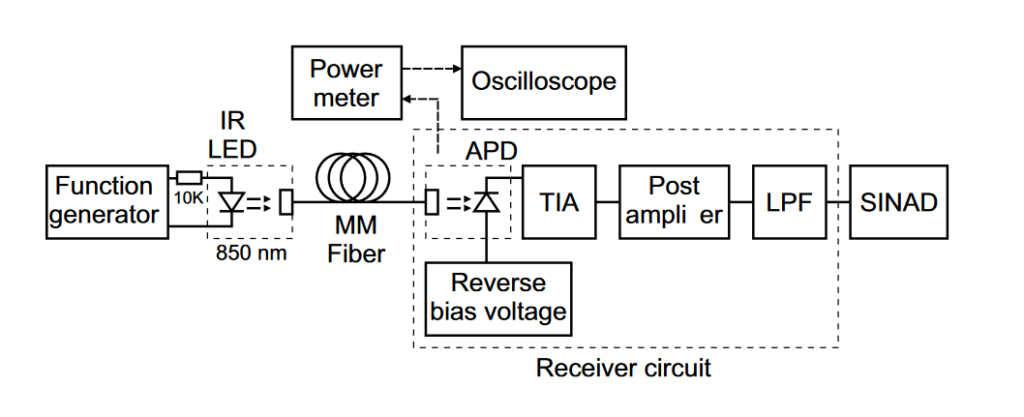
Silicon avalanche photodiodes (APDs) are designed predominantly for high-speed communication applications, but they can also offer interesting low-light application solutions in lower frequency bands. The design and analysis of a high sensitive silicon avalanche photodiode (APD) receiver for low-light fiber-optical sensor applications is described in this paper. The presented analysis shows relatively significant differences in the overall achievable signal-to-noise and distortion ratio (SINAD) of an optical receiver when using otherwise apparently very similar APDs. Furthermore, to maximize SINAD for the selected APD at a given target total receiver gain, an optimum setting exists between diodes’ internal gain (reverse voltage) and transimpedance gain. Unfortunately, these optimum settings are usually not determinable from the typical specification parameters that are given by APD suppliers, but rather need to be determined experimentally. A circuit with low-noise transimpedance amplifier (TIA) followed by post-amplifier and low-pass filter has, thus, been designed for measurement of the fiber-optical sensor signals with optical power less than 100 pW at 20 kHz bandwidth. The overall SINAD of a receiver circuit is highly dependent on APD excess noise and, therefore, several receiver circuits with different APDs have been built and tested. The receiver responsivity 5.5 GV/W and SINAD of more than 20 dB are achieved with the optimally selected APD.
